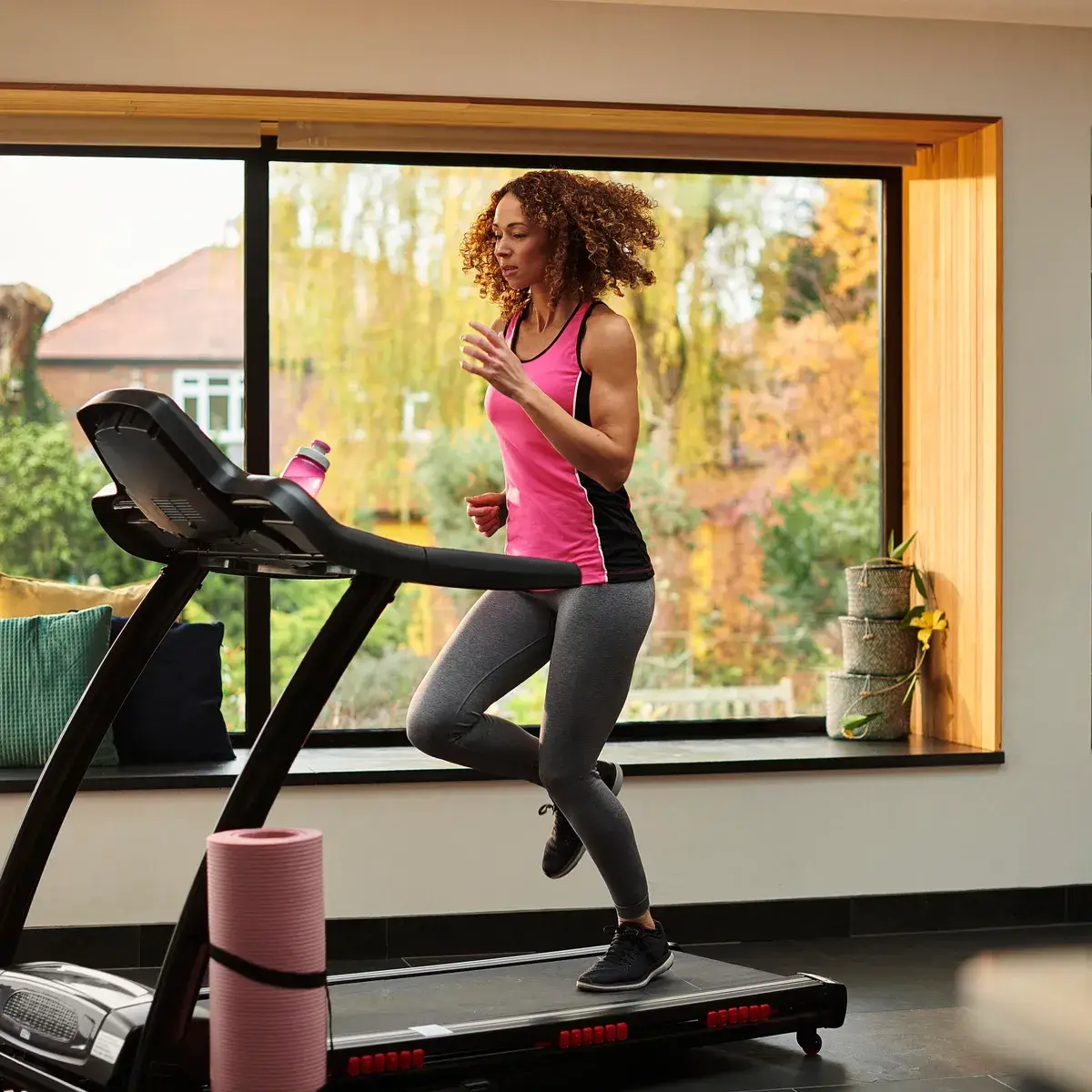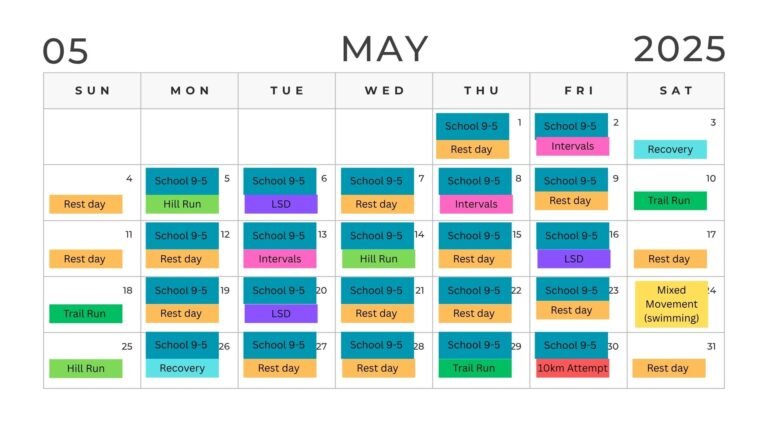Training and Injury Prevention
Why One-Size-Fits-All Plans Don't Work
Everyone’s body, schedule, and fitness level is different — so why follow the exact same plan? What works for someone else might leave you injured, burnt out, or frustrated. It’s better to listen to your body, start at your own pace, and adjust as you go. Real progress comes from doing what works for you.
Training Smart, Not Just Hard
Pushing yourself is great — but overdoing it leads to injury and burnout. Smart training means taking rest days, switching up your runs (ideas below), and knowing when to slow down. Progress isn’t just about running more; it’s about running better. Listen to your body, and train in a way that keeps you going long-term.
Make It Realistic but Still a Challenge
You don’t need to run a marathon tomorrow — but you should aim to push yourself a little. Start with goals that fit your life and fitness level, then slowly level up. Running should feel rewarding, not impossible. Challenge yourself, but keep it doable. That’s how you stay motivated.
Terrain Types

✅ Softer surface — easier on your joints.
✅ Peaceful, natural vibe (great for mental health).
❌ Uneven ground can mess with your balance or cause ankle rolls.
⚠️ Can be slippery when wet.

✅ Super flat and even — perfect for sprints, intervals, or pacing practice.
✅ Safe surface that’s softer than concrete but firmer than grass.
✅ Great place to test yourself without dodging people, cars, or dogs.
❌ Can feel repetitive (especially running loops over and over).
❌ Not always accessible unless you’re near a school or athletics centre.

✅ The most accessible option — it’s literally everywhere.
❌ Super hard surface = harsh on your knees, ankles, and hips.
❌ Most likely to cause overuse injuries like shin splints or stress fractures.

✅ Controlled environment — no wind, no hills, no rain.
✅ Great for beginners or interval training.
❌ Can feel boring and repetitive.
❌ Not realistic if you plan to run outdoors or compete — real terrain is messier.
Running 101
Knowing the type of run you’re doing helps you train with purpose — not just randomly. Each type of run works your body differently, whether it’s building speed, endurance, or helping you recover. If you only ever do the same kind of run, you’ll plateau, get bored, or risk injury. Mixing it up keeps things balanced, effective, and way more fun.
Interval Runs
Short bursts of fast running with rest in between. Builds speed and stamina, but don’t overdo it — they’re intense.
Fartlek (Speed Play)
Mix of slow, medium, and fast running — usually unplanned and fun. Great way to build fitness without structure.
Tempo Runs
Steady runs at a “comfortably hard” pace. These improve endurance and help you hold a stronger pace for longer.
Recovery Runs
Short, slow runs to help your body recover from harder sessions. Keeps you moving without adding too much stress.
Sprint/Track Runs
Short, all-out efforts over 100–400m. Builds explosive speed, usually done on a track or flat surface. Not necessary for beginners.
Cross Training Runs (Mixed Movement)
Running combined with other types of movement — like stairs, strength exercises, or circuits. Helps build full-body strength, breaks up repetitive running patterns, and lowers injury risk. Great for keeping things interesting and training muscles you don’t use on a flat path.
Long Slow Distance (LSD)
Easy-paced, longer runs that build mental and physical endurance. Great for beginners and low-stress training.
Hill Runs
Running uphill (or up stairs) to build leg strength and improve running form. Tough but super effective.
Trail Runs
Off-road runs through nature. Great for balance, strength, and a mental refresh. Just watch your footing.
Example Running Schedule
This is an running schedule, see the plan for the next month – yes month. Refine you plan every month your goals are allowed to change!
Grace is a 17 year old high school student, she has never run more then 3km. She has wants to run 10km (without stopping) in 4-5 months she doesn’t care about her time.

Injury and Prevention
Injuries suck — they slow you down, mess with your progress, and can knock your confidence. Knowing how to prevent them means you can run longer, feel better, and actually enjoy training. A few small habits (like warming up properly, not overtraining, and wearing the right shoes) can save you months of pain later. Train smart now, avoid setbacks later.

Common Injuries + What Causes Them

Stretching vs. Warming Up

When to Rest vs. Push Through
References
Bauerfeind Australia 2025, Bauerfeind, Bauerfeind Australia , viewed 18 June 2025, <https://bauerfeind.com.au/blogs/news/running-on-grass-vs-concrete-does-it-matter?srsltid=AfmBOorHtP63S8lyMpCxinwEfTbfrYj6Viawte4WIKg95ubWTgtlMOdQ>.
Bloom, M 2015, What is the best surface to run on to avoid getting injured?, Runner’s World.
Bowman, J 2021, Essential Stretches for Runners, Healthline.
Hadfield, J & Runner’s World Editors 2018, Everything to Know About the Different Types of Runs, Runner’s World, Runner’s World.
https://www.facebook.com/WebMD 2022, Common Running Injuries: Causes, Prevention, and Treatment, WebMD.
Redmond, A 2023, The Importance of Warming Up & Cooling Down, Alter Ego Running, viewed 18 June 2025, <https://alteregorunning.com/blogs/news/the-importance-of-warming-up-cooling-down-in-running-maximizing-performance-preventing-injury?srsltid=AfmBOooxSBO1aYrT2GaV6-vRWxAUPMeky-lm0sHE5dOe083wUpBRTyId>.
running 2022, MVP, MVP, viewed 18 June 2025, <https://www.myvitalityphysio.com.au/mvp-knowledge/when-should-i-stop-running>.